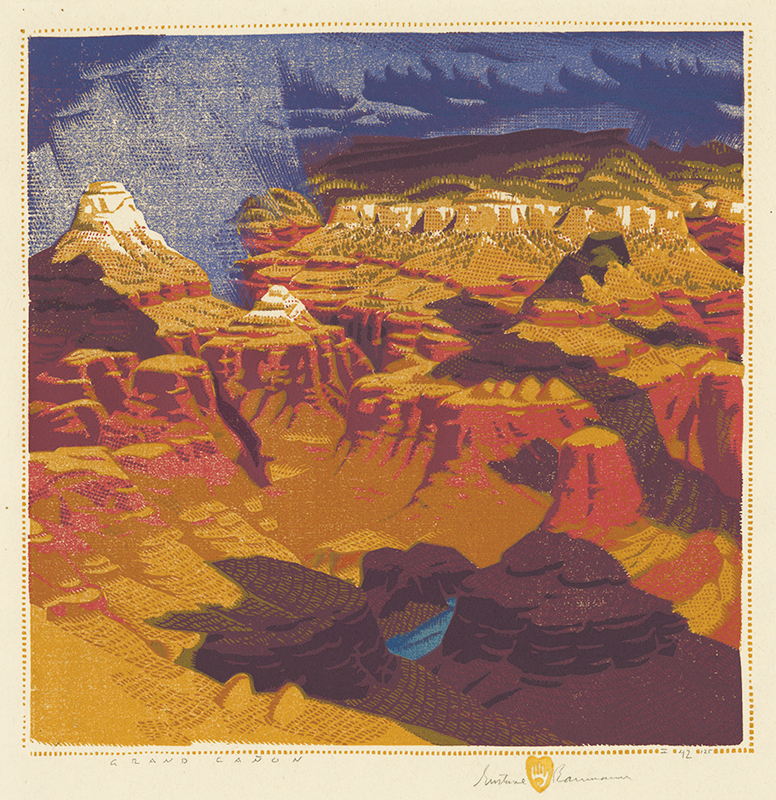Grand Cañon is a color woodcut created in 1934 by American master printmaker Gustave Baumann. This impression is pencil signed, titled, and editioned I 42-125. Grand Cañon is from the first printing of the blocks and was printed by the artist on cream Zanders laid paper with his Hand-in-Heart watermark. The image measures 12-3/4 x 12-7/8 inches.
The reference for Grand Canyon is Chamberlain 145. For an explanation of the various printing campaigns within the edition of 125 and the number of blocks used, we refer you to pages 388-389 of In A Modern Rendering The Color Woodcuts of Gustave Baumann: A Catalogue Raisonné. This was Baumann’s final woodcut depicting the Grand Canyon. His first, Cedar Grand Canyon, was created in 1921.
On the subject of the Grand Canyon, Baumann wrote: When one’s working radius, which was four miles in my Nashville days, expands to twelve hundred it gives one a kind of all-over-the-lot feeling in the southwest where intimacy of landscape is hard to find if at all. The mountains are too high and the Grand Canyon too deep to behave properly within the limits of a frame, and yet as a discipline to put man in his place there is nothing like the Grand Canyon. You see it and then you don’t as clouds suddenly tear into it from nowhere. It is a bewildering place, distance means nothing. The nearest habitation on the North Rim is fourteen miles, but you travel two hundred to get there unless you are willing to take a chance on a shaky bridge that crosses the river. Some day “Old Cautious“—that’s me—is going to take the long way around. Probably what I’ll find is that I could have staid [sic] where I was just as well, sitting in my favorite hiding place just under the South Rim.
Gustave Baumann was born in Magdeburg, Germany on 27 June 1881. Ten years later his family immigrated to the US, settling in Chicago. In 1896, Baumann began working in the commercial art field while saving money to study in Germany. After returning from Munich in December 1905 where he studied at the Kunstgewerbeschule, Baumann worked again in commercial art to support his family. In 1909, he discovered Brown County, Indiana where life was inexpensive and he could stay for three months. He produced a series of small format color woodcuts featuring the people and places of Brown County and then produced five large format color woodcuts. His woodcuts were accepted by the committee for the 1915 Panama Pacific International Exposition and he won a gold medal in 1916. Baumann headed east to Wyoming, New York in 1917 and taught at a summer school. From there he headed to Provincetown and New York City before returning to set up his studio in Wyoming. The southwest beckoned and he headed west in May 1918, stopping in Taos for the summer and fall. His funds were low and he needed to head back to Chicago but first stopped at the new art museum in Santa Fe to see an exhibition of his woodcuts. The rest, they say, is history.



